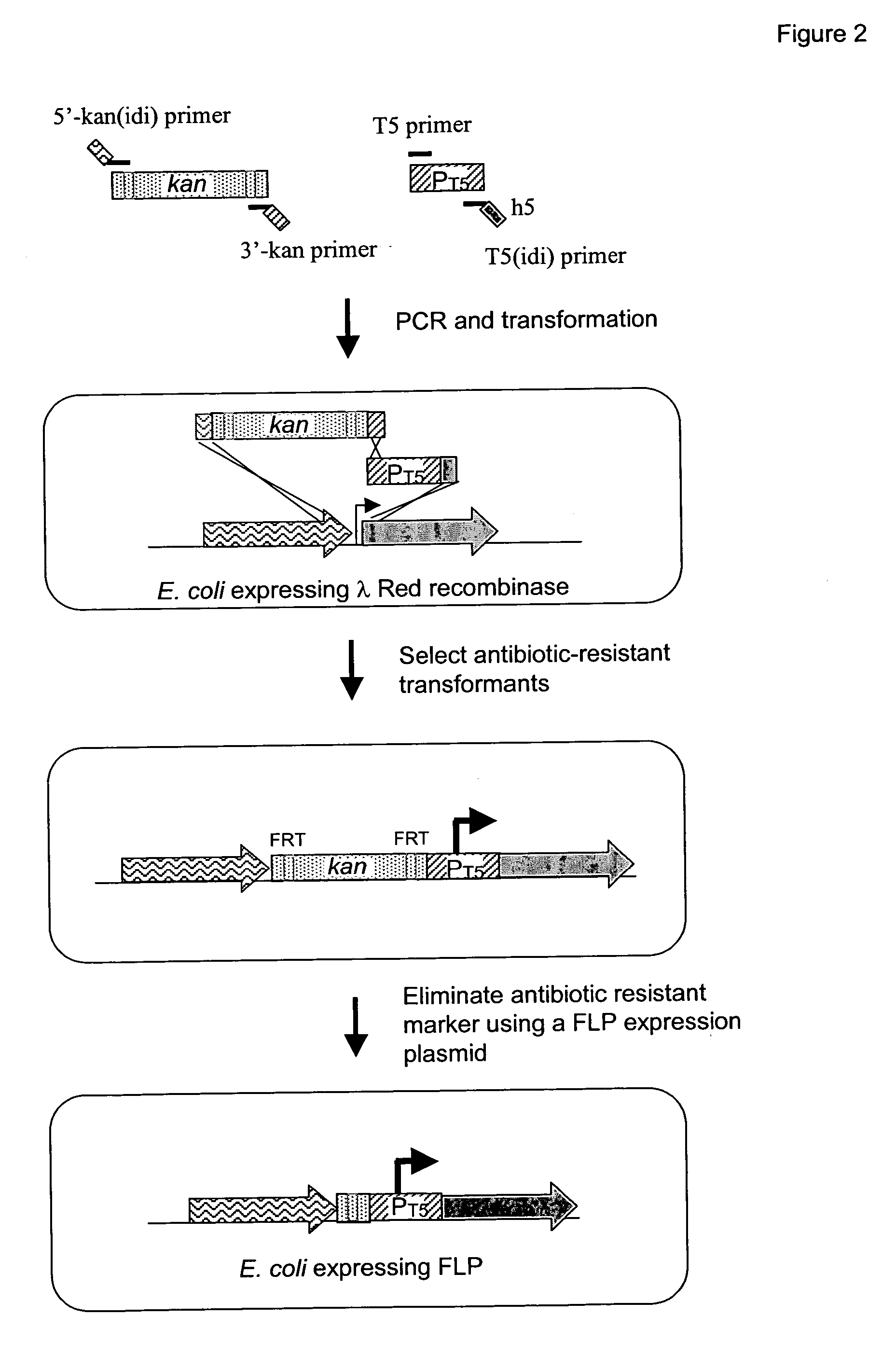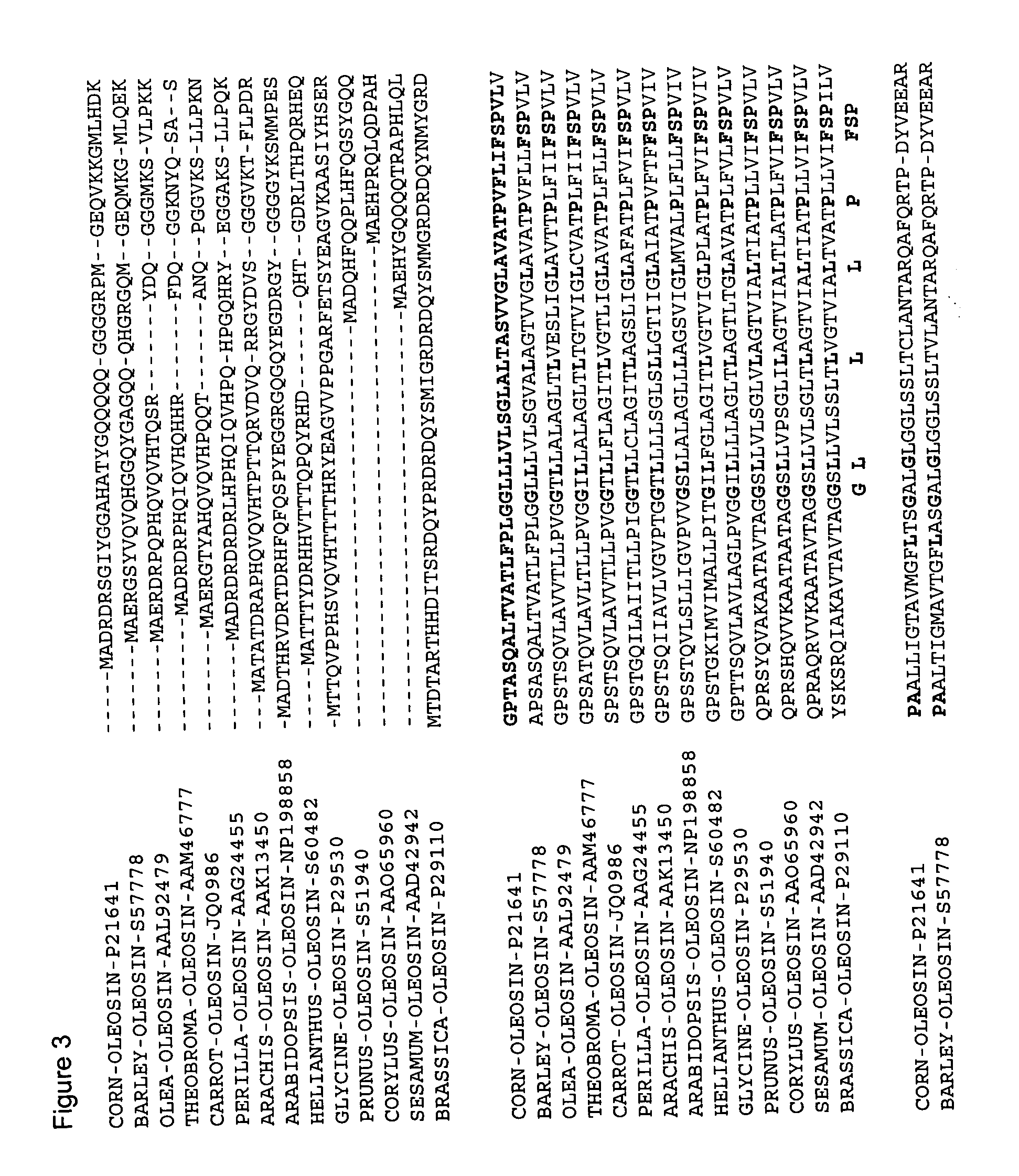Method to increase hydrophobic compound titer in a recombinant microorganism
a technology of recombinant microorganisms and compound titer, which is applied in the field of microorganisms and molecular biology, can solve the problems of poor growth characteristics, inadequate precursor supply, insufficient compound production, etc., and achieves the effects of increasing the hydrophobic/lipophilic compound titer, increasing the available hydrophobic/lipophilic storage capacity, and increasing the level of hydrophobic/lipophilic titer
- Summary
- Abstract
- Description
- Claims
- Application Information
AI Technical Summary
Benefits of technology
Problems solved by technology
Method used
Image
Examples
example 1
Cloning of Genes from Pantoea stewartii
[0216] Because of the relatedness between P. stewartii and E. uredovora, P. stewartii carotenoid synthesis genes can be amplified by PCR using primers based on the published sequence of the E. uredovora crt genes (GenBank® Accession No. D90087, Misawa et al., J. Bacteriol., V172: 6704 (1990)). This was demonstrated previously for the crtE, crtB and crtI genes (Scolink and Bartley, Plant Physiol., 108:1343 (1995)). Using the same approach, primers were designed using the sequence from Erwinia uredovora to amplify a fragment by PCR containing the crt genes. These sequences included 5′-3′:
ATGACGGTCTGCGCAAAAAAACACGSEQ ID NO:13GAGAAATTATGTTGTGGATTTGGAATGCSEQ ID NO:14
Chromosomal DNA was purified from Pantoea stewartii (ATCC No. 8199) and Pfu Turbo polymerase (Stratagene, La Jolla, Calif.) was used in a PCR amplification reaction under the following conditions: 94° C., 5 min; 94° C. (1 min)-60° C. (1 min)-72° C. (10 min) for 25 cycles, and 72° C. ...
example 2
Construction of E. coli Strains with the Phage T5 Strong Promoter Chromosomally Integrated Upstream of Isoprenoid Genes
[0217] The native promoters of the E. coli isoprenoid genes, dxs, idi, and ispDispF were replaced with the phage T5 (PT5) strong promoter (SEQ ID NO: 15) using the “two PCR-fragments” chromosomal integration method as shown in FIG. 2. The two PCR-fragment method used in the present application has been previously described (U.S. Ser. No. 10 / 734778, U.S. Ser. No. 10 / 734936, and U.S. Ser. No. 10 / 735442; hereby incorporated by reference). The method for replacement is based on homologous recombination via the λ Red recombinase encoded on a helper plasmid. Recombination occurs between the E. coli chromosome and two PCR fragments that contain 20-50 bp homology patches at both ends of PCR fragments (FIG. 2). For integration of the T5 strong promoter upstream of these genes, a two-PCR-fragment method was employed. In this method, the two fragments were comprised of a line...
example 3
Construction of E. coli PT5-dxs PT5-idi PT5-ispDF Strain
[0225]E. coli PT5-dxs PT5-idi PT5-ispDF, was constructed as follows.
[0226] First, P1 lysate of the E. coli kan-PT5-dxs strain was prepared by infecting a growing culture of bacteria with the P1 phage and allowing the cells to lyse. For P1 infection, E. coli kan-PT5-dxs strain was inoculated in 4 mL LB medium with 25 μg / mL kanamycin, grown at 37° C. overnight, and then sub-cultured with 1:100 dilution of an overnight culture in 10 mL LB medium containing 5 mM CaCl2. After 20-30 min of growth at 37° C., 107 P1vir phages were added. The cell-phage mixture was aerated for 2-3 h at 37° C. until lysed, several drops of chloroform were added and the mixture vortexed for 30 sec and incubated for an additional 30 min at room temp. The mixture was then centrifuged for 10 min at 4500 rpm, and the supernatant transferred into a new tube to which several drops of chloroform were added.
[0227] Second, P1 lysate made on E. coli kan-PT5-dxs ...
PUM
| Property | Measurement | Unit |
|---|---|---|
| temperature | aaaaa | aaaaa |
| temperature | aaaaa | aaaaa |
| temperature | aaaaa | aaaaa |
Abstract
Description
Claims
Application Information
 Login to View More
Login to View More - R&D
- Intellectual Property
- Life Sciences
- Materials
- Tech Scout
- Unparalleled Data Quality
- Higher Quality Content
- 60% Fewer Hallucinations
Browse by: Latest US Patents, China's latest patents, Technical Efficacy Thesaurus, Application Domain, Technology Topic, Popular Technical Reports.
© 2025 PatSnap. All rights reserved.Legal|Privacy policy|Modern Slavery Act Transparency Statement|Sitemap|About US| Contact US: help@patsnap.com



